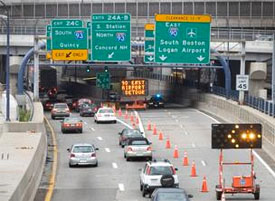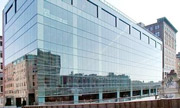Is your commute better or worse than it was 2 years ago? According to http://www.inrix.com/ Boston leads the charge with the greatest increase. That combined with the increase purchase order of tractor trailers says that this is a trend that will continue well into the future.
An article on the BBJ, citing traffic data from INRIX, quantifies just how bad Boston’s traffic was in 2013:
“[The Boston metro area’s] congestion index rose 22 percent, the most of any region in the top 10 and the 8th biggest increase of all 100 metro areas. Boston drivers now waste 38 hours a year in traffic, on average. INRIX counts any time spent driving at less than half a roadway’s typical speed as wasted time. Of course, you’ll end up wasting a lot more if you drive on the Southeast Expressway, Boston’s most congested highway based on INRIX’s calculations: A 10-minute drive can turn into 35-minute drive at morning rush hour. (That said, there are plenty of drivers who would tell you they’d be relieved to get through the Expressway in 35 minutes at rush hour.)”
The full article is available on the Boston Business Journal: Boston’s traffic jams.


